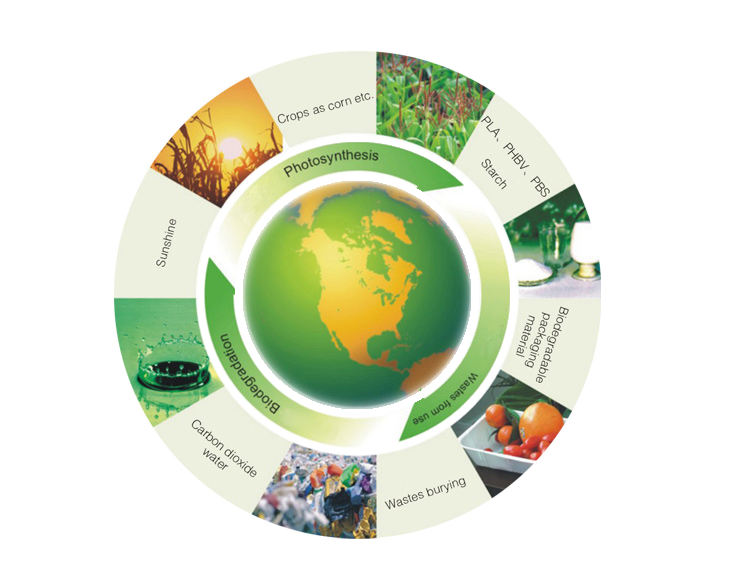Recycling vs Compostable
Understanding the difference between recycling and compostable materials is crucial for making informed packaging decisions.
Recycling involves converting waste materials into new products through mechanical or chemical processes. This system works primarily with inorganic materials like paper, glass, metal, and certain plastics. The recycling process breaks down materials to create new products, though many items are actually “downcycled” into lower-quality materials with limited reuse potential.
Compostable materials, on the other hand, are designed to break down naturally through biological processes. These organic materials decompose into nutrient-rich compost when exposed to proper conditions, typically within 180 days in industrial composting facilities. Unlike recycled materials that may eventually end up in landfills, compostable materials complete a natural cycle by enriching soil and supporting plant growth.
Key differences include:
- Materials: Recycling handles non-organic waste; composting processes organic matter
- Process: Recycling uses mechanical/chemical processing; composting relies on natural decomposition
- End Result: Recycling creates new products; composting produces soil-enriching compost
- Environmental Impact: Both reduce landfill waste, but composting also reduces methane emissions and supports soil health
Why Compostable Packaging?
Compostable packaging addresses critical environmental challenges that traditional plastic packaging cannot solve. Flexible plastic films and multilayered packaging, while essential for food protection and shelf-life extension, present significant recycling challenges with only 3% recycling rates even in advanced markets.
Environmental Benefits of compostable packaging include:
- Pollution Reduction: Compostable materials don’t contribute to microplastic pollution or persist in marine environments. They break down into harmless organic compounds rather than accumulating in ecosystems.
- Greenhouse Gas Reduction: When organic waste decomposes in landfills, it generates methane—a greenhouse gas 28 times more potent than carbon dioxide. Composting significantly reduces these emissions while sequestering carbon in soil.
- Soil Enhancement: Compostable packaging contributes to soil health by increasing organic matter content, improving water retention, and supporting beneficial microorganisms. This is particularly important as global soil degradation threatens agricultural productivity.
- Waste Stream Optimization: Compostable packaging enables single-stream collection of organic waste, dramatically increasing organic recycling rates. Studies show that including certified compostable packaging in organic waste collection can increase household participation by up to six times.
- Resource Efficiency: Made from renewable plant-based materials like corn starch, sugarcane, or cellulose, compostable packaging reduces dependence on finite fossil fuel resources while supporting agricultural economies.
Circular Economy
The circular economy represents a fundamental shift from the traditional “take-make-dispose” linear model to a regenerative system where materials continuously cycle through use, reuse, and renewal phases.
In packaging applications, circular economy principles focus on three core strategies:
Design Out Waste & Pollution: Creating packaging solutions that eliminate problematic materials from the start. Compostable alternatives address the pollution challenge at the design phase, enabling circular end-of-use for previously non-recyclable materials.
Keep Materials in Use: Maximizing the value and lifespan of materials through innovative design and material selection. This includes protecting food to prevent waste, enabling clean organic waste collection, and supporting soil regeneration cycles.
Regenerate Natural Systems: Moving beyond “doing less harm” to actively contributing positive environmental value. Compostable packaging supports soil rebuilding, carbon sequestration, and ecosystem restoration.
Economic Impact of circular packaging systems includes cost savings through resource efficiency, new revenue streams from waste valorization, and reduced disposal costs. The circular economy could unlock $4.5 trillion in global economic growth by 2030, with packaging playing a crucial role.
Business Benefits encompass enhanced brand reputation, regulatory compliance, cost reduction through material efficiency, and access to environmentally conscious consumer segments.
What is Sustainable Packaging?
Sustainable packaging integrates environmental responsibility with functional performance throughout the entire product lifecycle. It encompasses material sourcing, production processes, transportation efficiency, end-of-life management, and social impact considerations.
Key Characteristics of sustainable packaging include:
- Material Innovation: Utilization of renewable, bio-based materials that reduce fossil fuel dependence. Plant-based polymers derived from corn, sugarcane, potato starch, and cellulose offer comparable performance to traditional plastics while providing end-of-life advantages.
- Functional Excellence: Maintaining essential protective properties including moisture barriers, oxygen protection, shelf-life extension, and food safety while incorporating sustainability features. Sustainable packaging must perform comparably to conventional alternatives.
- End-of-Life Solutions: Designing for appropriate disposal pathways whether through industrial composting, home composting, or specialized recycling streams. Clear labeling and consumer education support proper disposal practices.
- Supply Chain Integration: Considering transportation efficiency, storage optimization, and distribution impact. Lightweight designs and renewable materials contribute to reduced carbon footprints throughout the supply chain.
- Regulatory Compliance: Meeting evolving regulations such as the European Directive 2018/852, which mandates that all plastic packaging must be reusable, recyclable, or compostable by 2030.
- Consumer Alignment: Responding to growing consumer demand for environmentally responsible packaging, with 73% of global consumers willing to change consumption habits to reduce environmental impact.
Sustainable packaging represents a strategic business opportunity that addresses environmental challenges while meeting performance requirements and consumer expectations. By embracing materials innovation, circular design principles, and comprehensive lifecycle thinking, businesses can contribute to environmental sustainability while maintaining competitive advantages in evolving markets.

